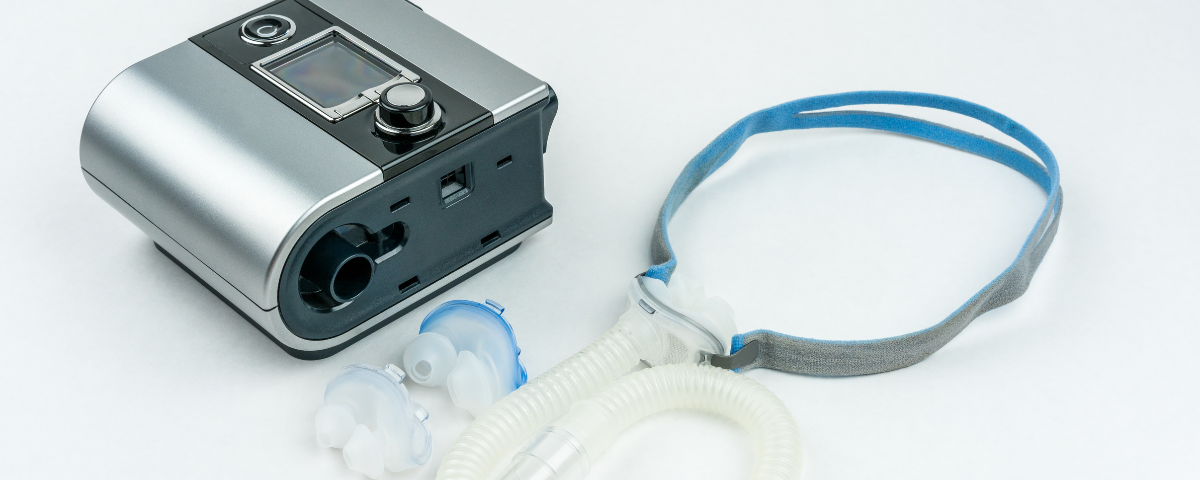In America, many people ask if Sleep Apnea can be cured. This is a common yet potentially serious sleep disorder affecting millions worldwide. Obstructive sleep apnea is estimated to affect 26% of individuals between 30 and 70 years in the U.S.
Left untreated, it can lead to various health problems, including heart disease and stroke.
But how do you know if you or a loved one has sleep apnea? In this blog post, we’ll discuss the common symptoms of this condition and if it can be cured or treated.
What is Sleep Apnea?
Sleep apnea is a common sleep disorder that happens when a person has repeated interruptions in breathing during sleep. But why? Well, your brain awakes you to protect you when you stop breathing in your sleep. But, on the other hand, this prevents you from having a good night’s sleep and especially achieving deep sleep.
These interruptions, or apneas, can last from a few seconds to minutes and may occur multiple times in an hour.
Sleep apnea can lead to various health concerns, including excessive daytime sleepiness, headaches, irritability, and difficulty concentrating. In addition, if left untreated, sleep apnea can increase the risk of severe health issues such as hypertension, heart disease, and stroke.
Obstructive Sleep Apnea vs. Central Sleep Apnea
Sleep apnea can be Obstructive Sleep Apnea (OSA) or Central Sleep Apnea (CSA). Here is a summary of each one:
- Obstructive Sleep Apnea (OSA) is the most common form of sleep apnea, accounting for approximately 90% of cases. It occurs when the muscles in the back of the throat relax during sleep, causing the airway to narrow or close.
- As a result, the individual cannot breathe properly, decreasing blood oxygen levels. The brain then sends a signal to partially awaken the person to open the airway, which is often accompanied by a snort or gasp. This cycle can happen several times throughout the night, disrupting sleep quality and leading to daytime fatigue.
Risk factors for OSA include obesity, family history, alcohol consumption, nasal congestion, aging, and smoking.
- Central Sleep Apnea (CSA) is a less common type of sleep apnea that happens when the brain doesn’t signal to the muscles that control breathing during sleep. Unlike OSA, CSA is not caused by a physical airway blockage.
Instead, it is a neurological issue that affects the respiratory control center in the brain. In addition, CSA is often associated with other medical conditions like heart failure, stroke, and opioid use.
There is also Mixed Sleep Apnea, where a person can suffer from both types of sleep apnea, CSA and OSA.
Sleep Apnea Symptoms
Here are the top 10 common symptoms of sleep apnea that you should watch out for:
- Loud snoring: Snoring can be a telltale sign of sleep apnea. If you or your partner notice snoring interrupted by periods of silence followed by gasping or choking sounds, it might be time to consult a doctor.
- Gasping or choking during sleep: As a result of stopped breathing, individuals may wake up gasping or choking while their body tries to resume breathing.
- Frequent awakenings or insomnia: The constant disruptions caused by sleep apnea can lead to difficulties falling asleep or staying asleep throughout the night.
- Morning headaches: Waking up with headaches can be a sign of sleep apnea, often due to reduced oxygen levels in the blood during the night.
- Daytime sleepiness and fatigue: Poor sleep quality and interrupted breathing can leave you feeling excessively tired and sleepy throughout the day.
- Difficulty concentrating: Cognitive function can be affected by poor sleep quality and reduced oxygen levels, making it challenging for people with sleep apnea to focus and think clearly.
- Irritability or mood changes: Sleep deprivation caused by sleep apnea can lead to irritability, mood swings, or depression.
- Dry mouth or sore throat upon waking: Breathing through the mouth while sleeping due to airway obstruction can result in a dry mouth or sore throat in the morning.
Now you know what symptoms to watch out for. But can sleep apnea be cured?
Can Sleep Apnea be Cured?
Not really. Neither OSA nor CSA is entirely curable, but proper treatment can manage the symptoms effectively. The severity and frequency of symptoms can be reduced with appropriate interventions, improving the quality of life for individuals impacted by sleep apnea.
In some cases, bariatric surgery has been found to improve or even “cure” sleep apnea significantly, particularly when it comes to obstructive sleep apnea (OSA). The primary reason for this is the reduction of excess body weight, which can alleviate the pressure on the airways and improve breathing during sleep.
However, it is essential to note that not all patients who undergo bariatric surgery will experience the same degree of improvement in their sleep apnea. The results can vary depending on factors such as the individual’s weight, overall health, and the severity of their sleep apnea.
While bariatric surgery can be a successful treatment option for some, it is not a guaranteed cure for sleep apnea.
Discussing potential treatment options with a healthcare professional to determine the best course of action based on the individual’s specific circumstances is crucial.
Sleep Apnea Treatments.
There are differences in the treatments for Obstructive Sleep Apnea (OSA) and Central Sleep Apnea (CSA), primarily because the underlying causes of these conditions are different.
Treatments for OSA may include:
- Lifestyle changes: Losing weight, avoiding alcohol and drugs, quitting smoking, and adapting to sleeping on your side can help reduce OSA symptoms.
- Continuous Positive Airway Pressure (CPAP) therapy: A standard treatment for OSA, in CPAP, a person wears a mask over the nose or mouth during sleep, providing a constant stream of air pressure to keep the airway open.
- Oral appliances: Specially designed mouthpieces may help reposition the tongue and the jaw to keep the airway open and prevent choking.
- Surgery: In some extreme cases, surgical procedures may be recommended to remove excess tissue or correct structural abnormalities causing OSA.
Treatments for CSA may include:
- Treating the underlying medical condition: Addressing the root cause of CSA, such as heart failure, can help alleviate the symptoms.
- Bilevel positive airway pressure (BPAP): Similar to ASV, BPAP is a non-invasive ventilation therapy used primarily to treat sleep apnea and other respiratory conditions involving difficulty breathing.
- Adaptive Servo-Ventilation (ASV): This treatment involves a device that monitors and responds to the person’s breathing patterns to provide the appropriate level of air pressure, helping to stabilize breathing.
- Medications: In some cases, acetazolamide may be prescribed to stimulate breathing in people with CSA and OSA.
In conclusion, sleep apnea is a severe and prevalent disorder affecting millions. Although it cannot be entirely cured, fortunately, sleep apnea can be treated and managed with the help of a medical professional.
By understanding the differences between Obstructive Sleep Apnea (OSA) and Central Sleep Apnea (CSA), recognizing the common symptoms, and seeking professional advice, individuals can determine the most suitable treatment plan for their situation.
If you suspect you or a loved one may have sleep apnea, speak with your doctor to discuss options for diagnosis and treatment.
Disclaimer: The information provided in this article is for informational purposes only and is not intended to serve as a substitute for professional medical advice, diagnosis, or treatment.



